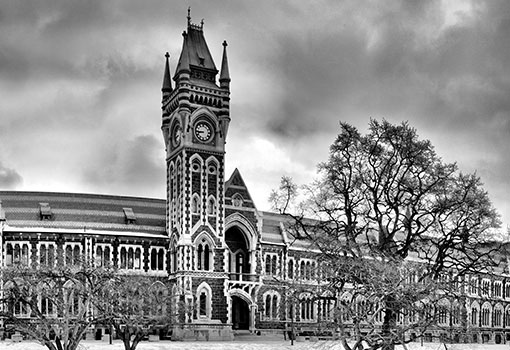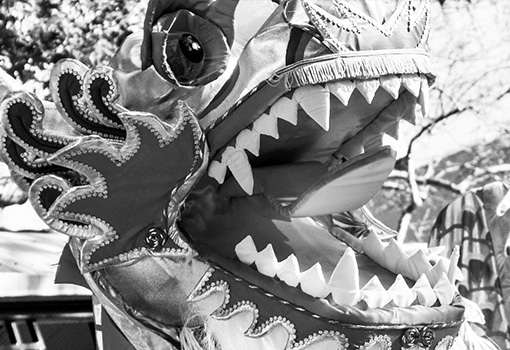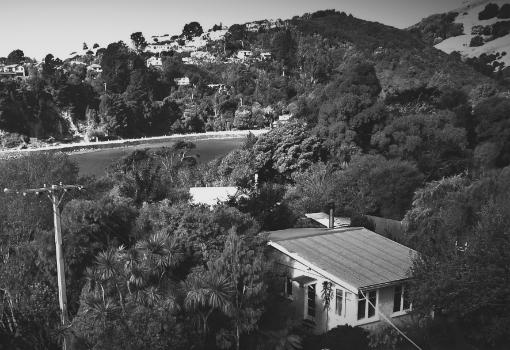Cover story: Aftermaths: Colonialism, Violence and Memory in Australia, New Zealand and the Pacific
By Kete Books | Posted:
Completely unscientifically and from a book buyer’s point-of-view, rather than a designer’s well- honed eye, each month, here at Kete, we judge books by their covers to come up with one we deem to be the most alluring. Then we hear from those who put it together to find out the story behind the cover.
In April, Aftermaths: Colonialism, Violence and Memory in Australia, New Zealand and the Pacific was the book cover that attracted our attention because of its combination of strong typography, colour and mark making on the art itself. It looked a little like barbed wire and fencing palings – surely symbols of colonisation – but were we reading too much into this?
Possibly - and perhaps the reason we loved it was because, unbeknown to us, it features an untitled 2001 art work by acclaimed painter John Pule and, honestly, who doesn’t love his art? On learning that it was one of his works, it made sense that we kept coming back to wonder at the composition, colours and symbols.
Fiona Moffat, production manager at publishers Otago University Press, oversaw the cover design so here’s what she had to say about creating a cover for a book that explores “the life-changing intergenerational effects of colonial violence in Aotearoa New Zealand, Australia and the Pacific.”
What elements went into deciding on what would go on the cover for Aftermaths?
We liaised with the editors and mocked up a few different visuals. This one eventually came out on top. The main element was the title. The word ‘aftermath’ itself. This is a multi-authored volume with chapters outlining many different acts of violence towards, and displacement of indigenous peoples. We wanted to have a cover that encompassed the whole collection, so it became important to choose a symbolic image rather than suggest a specific topic from the text.
Why did you go with image that you did – and can you share more about the elements that were chosen?
John Pule’s work was an obvious choice as much of it speaks of displacement and the horrors of colonisation. This work seemed perfect as it is so vivid, suggesting to me a coloniser’s slightly faded and weathered flag, a blanket, a wrapped bandaged. Also a series of parched, burnt landscapes, bloodstained and scraped bare. The small sharp details include Oceanic symbolism, flags, Christian iconography. It visually supports the subtitle: Colonialism, violence and memory. Cass Thompson, at Gow Langsford Gallery [who have represented John Pule since 1994], was great to work with and speedily supplied a copy of the work.
The typography has to work with the strong contrasts of the bands, so it’s kept black/white and integrated into the red and white bands, rather than trying to compete. The white panel on the spine was necessary for clarity, and the typography on the flaps echoes the bands in the artwork and are effective, I think, by keeping within the limited palette.
As an independent press, we like to use original work by local artists and support creatives whenever possible. I’ve worked with John Pule before and we published a gorgeous survey of his work, Hauaga, in 2011.
It kind of looks like a fence so I wondered if there wasn’t a subtle reference to the ‘Number 8 fencing wire’ mentality?
No, but it’s interesting to look at it that way.
What were the messages that you were wanting to convey with the cover design and illustration?
That this book is a high-quality, well-researched and contemporary work from the Pacific region.
What was the process of bringing it all together? Did you read the text first and did that have any influence?
I developed the text and the cover simultaneously. As mentioned above, the title of the book was the starting point for coming up with cover ideas. The font is repeated in the interior of the book so creates cohesion.
What were the challenges and, equally importantly, the joys of designing the cover?
The challenge is always to create a cover that everyone is pleased with. A book is a collaborative affair. The joy was working with John’s art and as part of a creative and professional team.
How different was it from other covers you have designed?
The concept of fully bleeding artwork is perennial. Every book is a unique project however, so in that way every cover is its own thing.
What other book covers, or art works, inspired you or fed into the creation of this cover?
I love the works of John Pule. His immense colour fields balancing minute and detailed symbolism fascinate me. The themes of the book and artwork relate.
Who - what - has influenced you creatively? Do you have any favourite book covers?
Having a printmaking background, ink on paper is basically what inspires me. Font shape, contrast, clarity and texture are influences, and white space. It’s hard to choose a favourite but Bauhaus style, mid-century graphic and the early digital work from the ‘90s are all touchstones. Equally I like the joyful loops and colours of covers by Jeffery Fisher and Sarah Maxey.
We're told that we should never judge a book by its cover but we all do. Is there a book that you've bought or picked up to read because of the cover?
Absolutely! All the time. The Way Through the Woods: of mushrooms and mourning, by Long Litt Woon, for example. I’m neither mourning nor a collector of mushrooms.
Angela Wanhalla, who edited Aftermaths along with Lyndall Ryan and Camille Nurka, on reaction to the cover:
How much input did you have into the cover - and did you have any ideas of how you wanted the book to look and the messages that the cover should convey?
We struggled with coming up with ideas for the cover. We toyed with using an image from one of the chapters. Most of the chapters cover historical events so we thought a historical image might work well but in the end making a choice from one of the chapters just didn’t speak to the volume as whole.
Aftermaths is about how communities and families remember or forget colonialism and violence across parts of the Pacific, New Zealand and Australia. A historical image just can’t do justice to these concepts or illuminate them visually for the variety of places discussed in the volume. We were so blessed to be working with Fiona Moffat. She made us think differently about the cover and pushed us to think more creatively. Her suggestion of the John Pule artwork, and the way she designed it, was inspiring.
What do you think of the finished product?
The editors as well as all the contributors love the cover. It was an inspired choice. The artwork is beautiful and evocative. The lines suggest rupture, which is exactly what colonialism does to societies, families and communities. In that respect, the cover is a perfect fit for the purpose of the book, which is itself a beautifully designed object.



